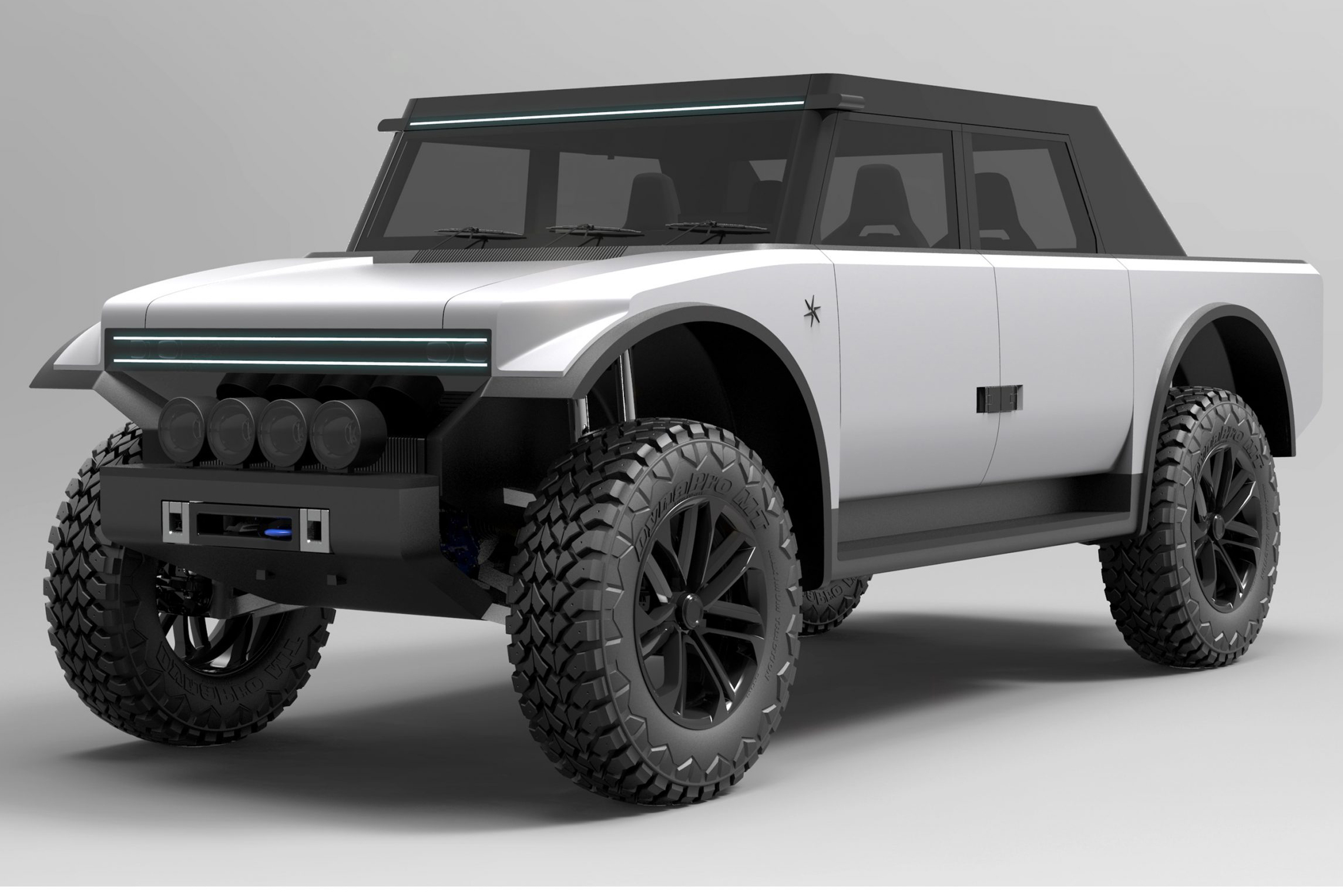In 2019, former Ferrari and McLaren F1 engineer Ben Scott-Geddes put pen to paper, hoping to design an expedition vehicle capable of a 56,000-kilometer Pole to Pole overland circumnavigation through some of the harshest and remote terrains on the planet. One leg of the journey, from Canada to Russia, was particularly challenging and required a vehicle with more than 4,000 kilometers of range that could also tackle treacherous icy terrain.
Scott-Geddes and his team of British engineers have now created the Fering Pioneer, an ultra-long-range and lightweight utility electric vehicle designed to be self-sufficient in the globe’s harshest environments. The Pioneer is attention-grabbing in many ways, but there are several features of this vehicle that are especially interesting to the overland adventurer and explorer.

The Pioneer is powered by two Yasa P400 electric motors with 600 newton meters of torque. Battery cells are lithium titanate oxide, which has a broader operating temperature range (-30 to 55°C) and a recharge efficiency exceeding 98 percent compared with conventional lithium-ion chemistry. These batteries provide zero local emissions, with an electric-only range of around 80 kilometers.
Fifty miles of electric range won’t get you far on a remote expedition, so the battery is supported by an 800cc 3-cylinder range extender combustion engine powered by biodiesel for longer adventures. Fering says that with long-range tanks fitted, the Pioneer will be capable of 7,000 kilometers between refueling or charging stops; fuel economy is expected to be around 50 mpg.

Fering Pioneer prototype undergoing testing.
Equal in weight to a medium-sized hatchback, the Pioneer’s dry curb weight is 1,500 kilograms. Fering’s engineers focused on a lightweight design, constructing the vehicle with an aluminum space frame with composite elements and exterior panels made from material akin to the canvas found in high-end hiking boots. Payload is substantial–the Pioneer can carry its own weight.


–
The first Pioneer prototype is currently undergoing testing, and series production will start in the UK during the first half of 2022. According to Autocar, eventual demand is estimated at 150 to 200 vehicles a year, from adventurers, explorers, and emergency services willing to pay £150,000+ for a standard vehicle or substantially more for a custom build. While the Pioneer comes with a hefty price tag, it provides an insight into the future of vehicle-based exploration.
For more information, visit fering.co.uk.
Our No Compromise Clause: We carefully screen all contributors to make sure they are independent and impartial. We never have and never will accept advertorial, and we do not allow advertising to influence our product or destination reviews.


